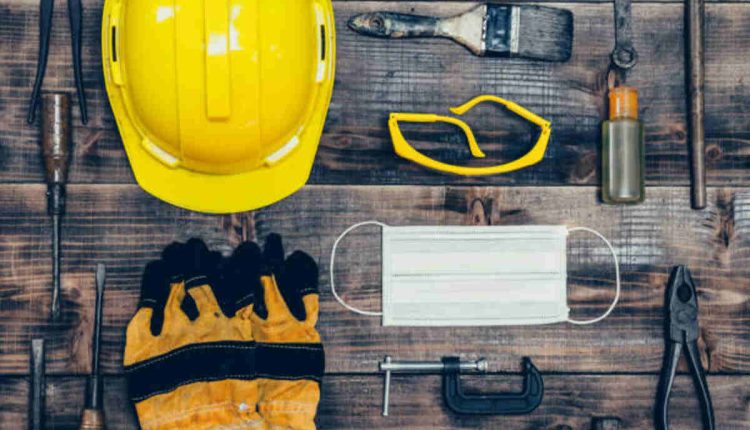Power Tool Maintenance
As a construction professional, your power tools are the hard-working driving force behind productivity on the job site. Those drills, saws, grinders, and nailers represent a significant investment in your business and your ability to get work done efficiently. However, like any piece of equipment subjected to harsh operating conditions, power tools require regular maintenance and care to perform at their best over many years. To learn more, check out https://www.ronix.ir/mag/introducing-construction-tools/
Neglecting essential maintenance is one of the biggest culprits behind premature power tool failure and downtime. Excessive dust, lack of lubrication, and broken accessories – are all easily preventable issues that can lead to expensive repairs or outright replacement much sooner than necessary. Proper cleaning, lubrication, and inspections are essential to extract maximum value from your tools.
In this edition of the blog, we’ll cover some vital power tool maintenance tips to extend service life and keep your electronic workhorses running strong as long as possible. A few simple habits can help you maximize your return on investment and prevent costly tool breakdowns.
Cleaning Power Tools Properly
One of the most important aspects of power tool care is keeping tools clean and free of excessive dust, debris, and contamination. Sawdust, drywall dust, metal shavings, and other particulates can wreak havoc on a tool’s internals if allowed to build up unchecked.
Always refer to the manufacturer’s instructions for proper cleaning procedures for each specific tool model and type. As a general rule, compressed air should be used to regularly blow out any accumulated debris from a tool’s vents, gears, and housing. To avoid exposing electronics to moisture, use a lightly dampened cloth for wiping down exterior surfaces only.
For tools like sanders that expel large amounts of particulates, it’s recommended to remove the dust collection bag and thoroughly vacuum out any residual dust and debris after every use. This prevents sawdust from clogging passages and prevents sawdust from enlarging inside. Harsh solvents should never be used to clean power tools.
Lubrication Leads to Longevity
Lack of proper lubrication is one of the leading contributors to premature power tool failure and decreased performance over time. Tools like rotary hammers, grinders, and reciprocating saws that involve a lot of high-speed, high-impact operation place immense stress on internal components. This constant friction and heat need to be mitigated by regular oiling and greasing to prevent accelerated wear, binding, and potential failure
Always refer to the manual guidance on which specific lubricants are recommended for each tool. For example, electric motor bearings may require different oils compared to gearboxes and assemblies. Ensure the proper amount and locations are lubricated according to the interval schedule. Most manufacturers recommend annual lubrication service at a minimum.
Inspect and Replace Consumable Parts
In addition to lubricating moving components, it’s essential to regularly inspect tools and replace smaller consumable parts that are expected to wear over time. Essential items to check for damage or excessive wear include:
• Air filters for adequate airflow
• Carbon brushes in electric motors
• Power cords for cuts or fraying
• Belt drive systems for cracking or glazing
• Spindles, chucks, ports for contamination
• Built-in dust collection components
Having extra consumable parts like brushes, drive belts, and filters on hand is a good idea to minimize any downtime and take care of essential on-site replacements. Leave more complex motor, gear, or bearing repairs up to trained professionals.
Proper Storage, Transportation Care
How you store and transport power tools can impact their usable lifespan just as much as poor maintenance. Tossing tools haphazardly on truck beds leads to unnecessary impacts that can damage components and loosen fasteners over time. Use sturdy, impact-resistant storage cases and transport tools securely to prevent bumps and rattling around.
When not in use, tools should always be stored in a clean, dry location, free from excessive moisture, dust, and debris. Concrete floors, in particular, can transfer moisture into tools, potentially leading to corrosion and other issues. Plastic tool chests or shelving are better storage options.
Take Advantage of Tool Service
Even with consistent preventative maintenance on your part, power tools inevitably need more involved service and repair over their lifespan. Most major manufacturers offer annual or multi-year tool service programs designed to give your tools a comprehensive inspection, tune-up, and repair if needed.
These services not only optimize the performance and longevity of your tools but also ensure they stay compliant with any applicable safety standards and regulations. Regular annual service can identify any looming issues before they turn into catastrophic and expensive failures. Factory-certified technicians can adequately clean, re-grease, and replace worn components.
While it involves an investment, professional power tool service is well worth the cost compared to running tools into the ground and needing excessive replacements and downtime. Prioritize tool maintenance, service, and care just as you would for other heavy equipment on your job site. A few essential habits and annual tune-ups will extend the life of your electronic workhorses so they can keep powering productivity for years to come.
Read also: How to Lay Affordable Asphalt Paving

